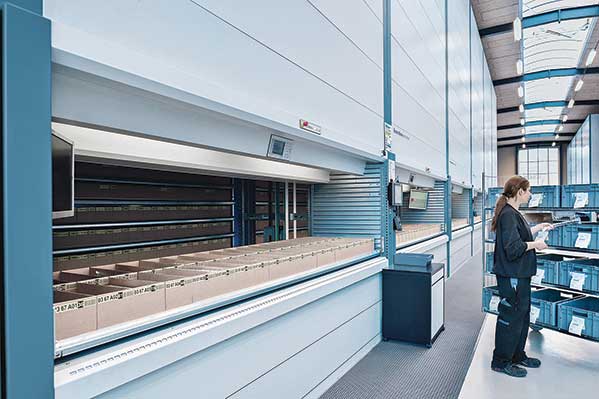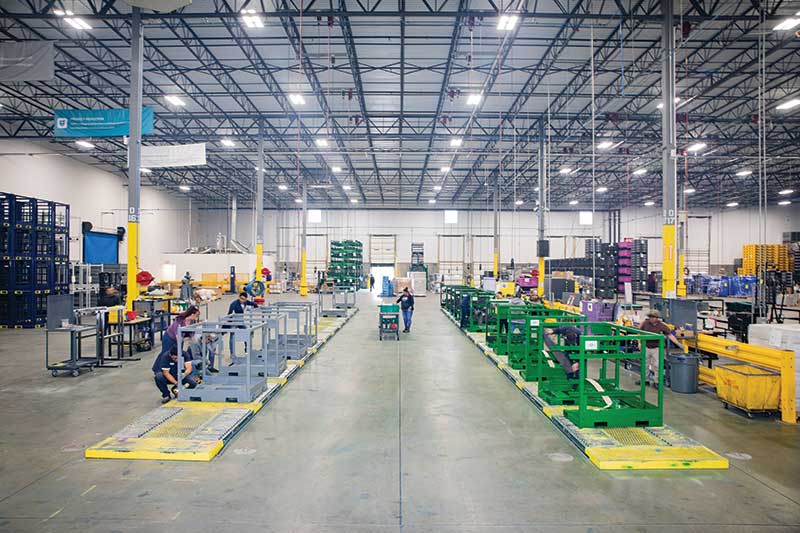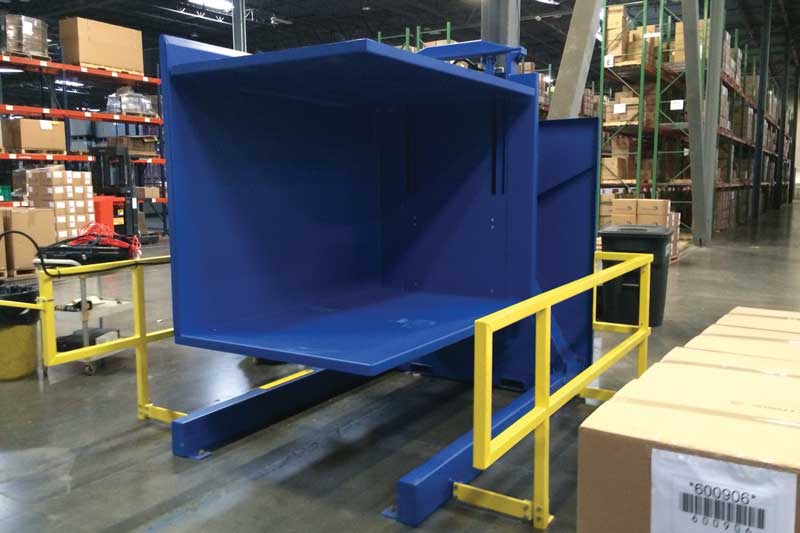Automotive materials handling: The calm after the storm
Following several tumultuous years, the automotive industry is looking at a steadier state in 2024.

It’s fair to say that 2023 turned out to be a relatively settled year for the automotive supply chain when you compare it to the “pandemic years.”
The disruptions still exist, mind you: Global conflicts, a drought in the Panama Canal, and ongoing attacks on cargo ships in the Red Sea have all had an impact. But through a combination of factors, the overall supply chain is better equipped and more resilient than four years ago.
Like last year, much of the focus in the automotive industry surrounds electric vehicle (EV) adoption and managing the changes that go with it. Unlike last year, however, not everyone is as bullish on EVs, and some are expressing pessimism on their future.
Regardless of where EVs are headed, the automotive industry continues to embrace technology at a rapid pace. It’s seeing a growing focus on environmental impact, and surprisingly little buzz about where AI will make its mark.
“The overall health of the automotive supply chain is now much more stable than in the past,” says Kacie Freeberg, senior director for the industrial and automotive VST at ORBIS. “Companies have adjusted to changing circumstances and implemented strategies to reduce risks and ensure smooth operations.”
The past year is perhaps most notable for something of a return to normal—or a maybe a new normal.
Evaluating EVs
Depending on who you ask, EV production is growing or it’s shrinking. “There have been investments in new assembly lines and the re-tooling of existing facilities to handle the manufacturing of EV and hybrid vehicles,” says John Costello, CEO of Cherry’s Industrial Equipment. “While there has been a slowdown in the production of traditional automobiles, that does not seem to extend to electric vehicles.”
While Costello sees the glass half full on EV production, Brian Baker, regional business director at Kardex Remstar, says the biggest trend in the automotive industry is the slowdown in EV production. “There was a big push last year to modify production lines, but in the second half of 2023, there was a slowdown,” Baker says. “Consumers see EVs as part of the future, but they’re just not buying them right now.”
The truth is probably somewhere in the middle. While demand did taper off in the latter part of 2023, EVs sales were the highest ever in the country last year—the market grew to 7.6% in 2023 from 5.9% in 2022.
At the federal government level, support continues to grow, too. The Department of Transportation recently announced $623 million in grants to support charging infrastructure, often perceived as the biggest barrier to growth.
Federal subsidies are in place to boost U.S. battery manufacturing, which has caught the attention of several auto manufacturers, including Hyundai, BYD and Panasonic and each has expressed interest in adding battery manufacturing plants in the United States.
“We had the opportunity to handle a project for Tesla, which was looking for materials handling equipment for the battery plant building in Las Vegas,” says Costello. “We do expect to see an uptick in demand for materials handling equipment to meet the needs of battery manufacturers.”
No matter what the production trend in the EV market, the supply chain is in transition as a result of its existence.
"This indicates a shift in manufacturing and distribution processes to accommodate the growing demand for EVs in North America. Additionally, there is ongoing work on establishing requirements and protocols for safely handling EV components and batteries, which are important considerations due to the unique characteristics and potential hazards associated with electric vehicles. This highlights the importance of ensuring the safety of workers and the efficiency of materials handling processes in the context of the evolving EV industry.” - Freeberg

Automation and robots rule
To that end, something almost everyone agrees on is that automation and robotics are taking on a greater role in the industry. One of the earliest adopters of the technology, the automotive industry continues to embrace robots for a variety of reasons.
“The automotive industry has always been an active user of automated materials handling,” says Bill Poust, automotive industry segment director at JBT Corporation. “Past use has included material movement in stamping plants, power train, manufacturing and assembly plants.”
A continuing labor shortage is contributing to this adoption. From struggles to find skilled labor or simply interested labor—Gen Z is proving resistant to manual labor jobs—to high labor costs resulting from union disputes, automation is now a must have. It is reducing the number of humans required on the lines and making those that remain more efficient.
“The industry faces spillover effects from the 2023 labor strike, with smaller automotive suppliers hit particularly hard,” says Costello. “Some of these firms have been reluctant to rehire laid-off employees and also cautious about building up inventory.”
As 2024 unfolds, Poust sees the industry reinventing itself with investments in electrification. “What was engine and transmission manufacturing is now being converted to battery and motor manufacturing,” he says. “Automakers are not only working to innovate ways to make those new components, but how those raw materials, components and subcomponents move through the manufacturing process is a huge consideration. Automotive material movement is on the forefront of how the industry is reshaping.”
In its earlier phases, the automotive industry looked to automation somewhat simply because it existed. That’s shifting, and automation is entering a mature phase, says Richard Canny, president of Ultimation Industries division of Motion & Control Enterprises (MCE). “Now, it’s all about optimizing everything on the assembly line,” he says. “The goal is moving beyond efficiently getting things from point A to point B.”
Now, both autonomous mobile robots (AMRs) and automatic guided vehicles (AGVs) are handling pallets, containers and supplies, and delivering them to the production line. This not only increases the assembly line’s productivity, but reduces injury rates.
Moving forward, says Costello, expect more technological advances and connectivity to the Internet of Things (IoT). “This will include the ability to remotely diagnose potential problems with equipment, allowing repairs to take place more quickly and reduce downtime,” he explains. “With robotics, it’s possible to deliver multiple pallets quickly.”
Large battery packs in the assembly line are also contributing to robotic and technology adoption. The need to flip them over or add additional components serves as perfect proving grounds for robots, taking the onus and injury potential off human labor. Companies can then upskill their employees, making the jobs more attractive for both recruitment and retention.
The role of AI
For the past year, artificial intelligence (AI) has dominated headlines, for better or worse. Seemingly every industry is exploring its role, finding places to implement it to some degree. While the automotive industry is often a leader in technology adoption, it’s still evaluating how AI will fit into the picture. Everyone agrees it will have a role, however.
“AI and machine learning are both important concepts that will help automated materials handling systems quickly adapt to process changes,” says Poust. “In the past, every change had to be predicted, and then appropriate responses had to be pre-programmed in. With AI and machine learning, appropriate responses can be applied and improved based on measured results.”

Baker says the industry is still figuring things out when it comes to AI. “It’s going to take some time before we see much AI in materials handling,” he says. “We’re seeing some use with robots, but mostly, AI is playing a role in predicting when suppliers might miss deliveries and need an alternate.”
Canny also hasn’t seen much movement of the needle with AI. “Conveyors and materials handling just aren’t seeing much in the way of AI yet,” he says. “Some of our team members are getting AI ready when it comes to optimizing content for our customers, but that’s it.”
Down the Road
Looking ahead, the automotive industry will likely enjoy a relatively stable year to come. EV manufacturing will continue to play a role, although to what extent remains a question. Robotics and automation will also have a place at the table, but most everyone agrees it will continue to be an increasingly larger role. And it’s unlikely another year will pass without growing AI infiltration somewhere along the line.
Perhaps the best news, however, is that the industry has figured out a way to get on top of supply chain disruptions, for the most part.
“Many companies in the automotive supply chain are focused on increasing their production volumes to pre-Covid levels,” says Freeberg. “This is a positive development that signals gradual recovery in the industry. However, it’s important for companies to remain vigilant and be prepared to adapt to any unexpected disruptions that may arise in the future.”

Article Topics
Cherry's Industrial Equipment News & Resources
Automotive materials handling: The calm after the stormLatest in Materials Handling
Geek+ and System Teknik deploy PopPick solution for pharmacy group Med24.dk Beckhoff USA opens new office in Austin, Texas Manhattan Associates selects TeamViewer as partner for warehouse vision picking ASME Foundation wins grant for technical workforce development The (Not So) Secret Weapons: How Key Cabinets and Asset Management Lockers Are Changing Supply Chain Operations MODEX C-Suite Interview with Harold Vanasse: The perfect blend of automation and sustainability Consultant and industry leader John M. Hill passes on at age 86 More Materials HandlingAbout the Author
Subscribe to Materials Handling Magazine

Find out what the world's most innovative companies are doing to improve productivity in their plants and distribution centers.
Start your FREE subscription today.
April 2024 Modern Materials Handling

Latest Resources










